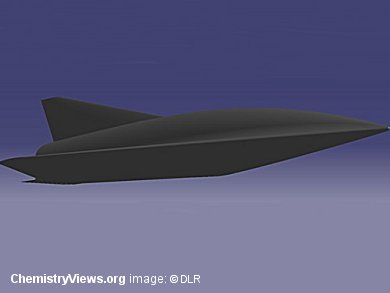Scientists from Germany, Austria, Spain, Switzerland, Italy, Belgium, the Netherlands, France, and Sweden have been carrying out research for three years for the Fast20XX (Future high-Altitude high-Speed Transport) project. The results of the EU project will influence the future design of the DLR SpaceLiner and the Aerospace Innovation GmbH ALPHA aircraft.
DLR SpaceLiner
The DLR SpaceLiner is intended to stand upright like a space shuttle before launch, e.g., in Europe, and take off on its journey to, e.g., Australia, using rocket engines. After the initial burn, the reusable booster stage will separate from the orbiter, in which there will be a capsule with a capacity of 50 passengers. The glide phase will start eight minutes later, at 20 times the speed of sound. The landing, around 80 minutes later, will take place on a normal runway like a conventional aircraft.
One important issue is cooling the space plane during flight. When the SpaceLiner glides it encounters friction from Earth’s atmosphere and can reach up to 1800 °C. To actively cool the aircraft, water will escape from porous ceramic components at the nose and the leading edges of the wings and will provide cooling as it evaporates. The DLR Institute of Structures and Design is developing and manufacturing suitable ceramics for this transpiration cooling and is simulating their flow on computers. Following work on Fast20XX with tests in the plasma wind tunnel, the engineers are now certain that active cooling is possible using porous ceramic materials.
The Institute of Aerospace Medicine has given a green light that a flight at hypersonic speed is tolerable for passengers.
It is already clear that the SpaceLiner can only be launched far from inhabited areas – and that high-speed flight must take place at high altitudes in order to protect inhabited regions from sonic booms. But many questions are still unanswered like: How can the rocket engine be made to operate reliably and safely? What should the tank pressurisation system look like? How must the thermal protection system for the entire aircraft be designed? And what requirements must the passenger cabin meet, since it will also act as a rescue capsule in the event of an emergency?
This long-term vision might start to happen around 2050.




